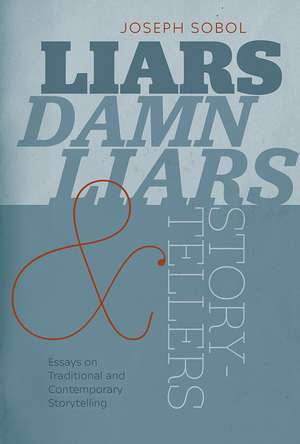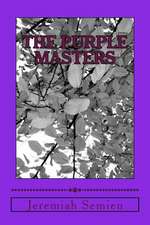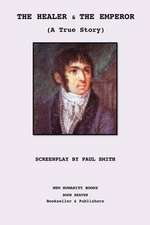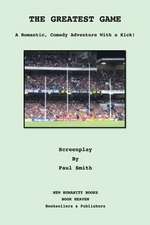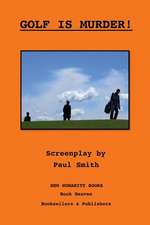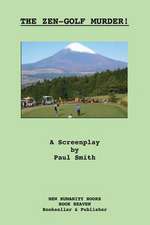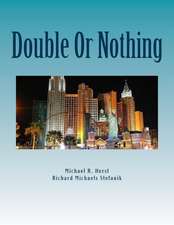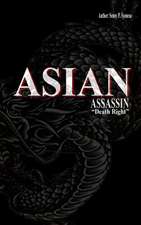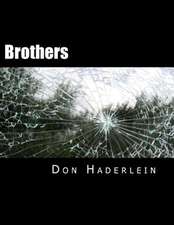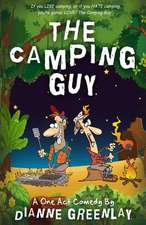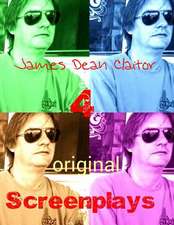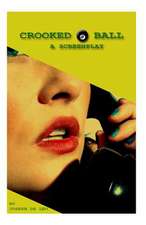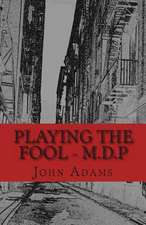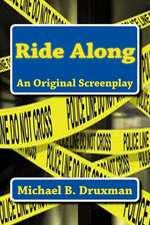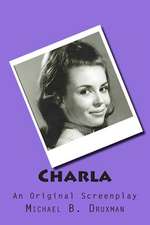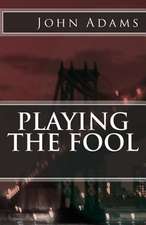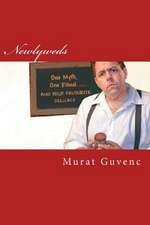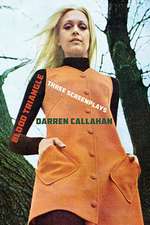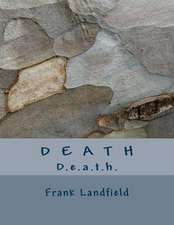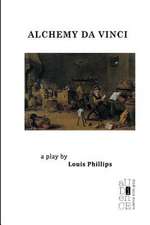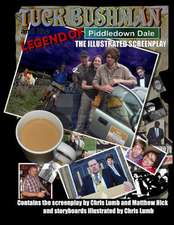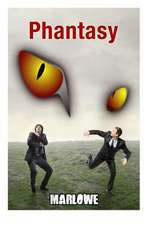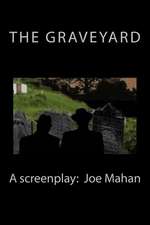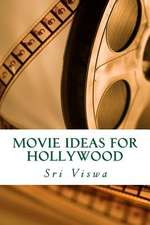Liars, Damn Liars, and Storytellers: Essays on Traditional and Contemporary Storytelling
Autor Joseph Sobolen Limba Engleză Hardback – 2 sep 2020
Joseph Sobol is one of a select few contemporary scholar-practitioners to chart the evolution of storytelling from traditional foundations to its current multifarious presence in American life. The years since his classic The Storytellers’ Journey: An American Revival (1999), have brought seismic shifts in storytelling circles. Essays gathered here move between cultural history, critical analysis, and personal narratives to showcase the efforts of traditional and contemporary storytellers to make their presence felt in the world.
The book begins with an account of recent changes in the storytelling landscape, including the growth of a new generation of urban personal storytelling venues sparked by The Moth. Next is a suite of essays on Appalachian Jack tales, the best-known cycle of traditional American wonder tales, and an account of its most celebrated practitioners, including close encounters with the traditional master, Ray Hicks. The next set examines frames through which storytellers capture truth—historical, legendary, literary, oral traditional, and personal. Stylistic differences between northern and southern tellers are affectionately portrayed, with a special look at the late, much-loved Alabaman Kathryn Tucker Windham.
The final section makes the case for informed critical writing on storytelling performance, through a survey of notable contemporary storytellers’ work, a look at the ethics of storytelling genres, and a nuanced probe of truth and fiction in storytelling settings. A tapestry of personal stories, social criticism, and artistic illuminations, Liars, Damn Liars, and Storytellers is valuable not only to scholars and students in performance, folklore, cultural studies, and theater, but also to general readers with a love for the storytelling art.
The book begins with an account of recent changes in the storytelling landscape, including the growth of a new generation of urban personal storytelling venues sparked by The Moth. Next is a suite of essays on Appalachian Jack tales, the best-known cycle of traditional American wonder tales, and an account of its most celebrated practitioners, including close encounters with the traditional master, Ray Hicks. The next set examines frames through which storytellers capture truth—historical, legendary, literary, oral traditional, and personal. Stylistic differences between northern and southern tellers are affectionately portrayed, with a special look at the late, much-loved Alabaman Kathryn Tucker Windham.
The final section makes the case for informed critical writing on storytelling performance, through a survey of notable contemporary storytellers’ work, a look at the ethics of storytelling genres, and a nuanced probe of truth and fiction in storytelling settings. A tapestry of personal stories, social criticism, and artistic illuminations, Liars, Damn Liars, and Storytellers is valuable not only to scholars and students in performance, folklore, cultural studies, and theater, but also to general readers with a love for the storytelling art.
Preț: 296.85 lei
Nou
Puncte Express: 445
Preț estimativ în valută:
56.80€ • 59.31$ • 47.01£
56.80€ • 59.31$ • 47.01£
Carte tipărită la comandă
Livrare economică 04-18 aprilie
Preluare comenzi: 021 569.72.76
Specificații
ISBN-13: 9781621905646
ISBN-10: 1621905640
Pagini: 368
Dimensiuni: 152 x 229 x 28 mm
Greutate: 0.61 kg
Ediția:1st Edition
Editura: University of Tennessee Press
Colecția Univ Tennessee Press
ISBN-10: 1621905640
Pagini: 368
Dimensiuni: 152 x 229 x 28 mm
Greutate: 0.61 kg
Ediția:1st Edition
Editura: University of Tennessee Press
Colecția Univ Tennessee Press
Notă biografică
JOSEPH SOBOL is a professor of storytelling in the Faculty of Creative Industries at University of South Wales, Cardiff, and director of the George Ewart Evans Centre for Storytelling. He previously led the graduate program in storytelling at East Tennessee State University.
Extras
The volume that you hold in your hands or that glimmers from your Kindle, gentle reader, traces a storyteller’s journey and a scholar’s sentimental education. It is the collected evidence of thirty-six years of listening to storytellers in the field, thirty-six years of thinking about them and about the places where they congregate, including the town where for about half of those years I came to live. It traces thirty-six years of writing about them, of teaching about them, and of identifying as one myself. As such, these essays weave back and forth between two mind-sets, between what Jerome Bruner called “paradigmatic and narrative thinking,” between drawing principles and telling stories.
This dialectical mind-set of stories and their animating principles is in fact the fundamental mind-set of the storyteller, for as Walter Benjamin established in his seminal essay “The Storyteller,” “Every true storyteller has counsel for his readers [or listeners].” To seek and to share counsel is to place oneself in the service of communicable truth, in one or more of its manifold disguises. The eighteenth-century Jewish teacher and storyteller known as the Magid of Dubno was famously asked, “Why do you always answer every question with a story?” He responded, “Let me answer that with a story:
“It’s your outfit,” said Parable. “There’s nothing to cover you. It embarrasses people. Here, let me lend you a few of my things.”
Since that proverbial exchange, of course, Truth has made a notable career of parading about in a dazzling array of generic costumes. And the public by and large has been much happier to see her so. But this naked Truth persists: sometimes people just like staring at the clothes, even as many layers of Truth within them still go begging. The pieces collected here aim to unveil the structured garments underpinning the storytellers’ art and to study the complex, all-too-human anatomy beneath.
The essays cluster around themes of lying and truth-telling in the art and practices of traditional and contemporary storytelling. There are three dimensions of story in which these themes play out. There is the dimension of the stories themselves (what lies within the narrative frame), with their generic markers of fact and fiction that serve to reveal and also conceal their structural oppositions—the social, emotional, and spiritual truths that spring from fictive frames, and the fictive devices that provide structure and texture for generically factual tales. There is the dimension of performance (called the meta-narrative frame), in which tellers construct iconic public personas that reveal and conceal their personal selves while enabling them to accomplish feats of engagement and imaginative transportation. And there is the social historical sphere that enfolds the performance space (sometimes referred to as the para-narrative frame), in which the facts and illusions that animate the zeitgeist also charge the images of the stories and the intentions of their performance with the urgent sense that such tissues of truth and lies are in fact imaginative substances that must be absorbed in the here and now.
When I began in storytelling in the early 1980s, the art was just coming into full bloom in the hothouse culture of a revival movement. In my development as a scholar, I took on the task of articulating a fundamental principle of the movement: that storytelling was to be understood and defined as much in terms of what it excluded as what it included. In the introduction to the inaugural issue of our journal, Storytelling, Self, Society, my coeditors and I staked out our denominational boundaries:
That was then. A generation on and from the perspective of another continent, I can still feel the truths in that position—and of the needs and narratives that compelled it—while admitting that my own needs and narratives, for pragmatic purposes, have shifted. The electronic media multiverse has evolved with stunning speed to consume and digest all forms of storytelling and distribute their substances among a swarm of new media extensions. What once seemed pure and noble, in the quixotic tradition, now seems pure and senseless in the same manner, like those elderly Japanese infantrymen holding out on lonely Pacific atolls, not knowing that the emperor had surrendered years ago.
Rather than sequester storytelling behind walls of exclusionary clauses, my current working definition of storytelling seeks to leave all channels open:
Whatever the genre of story being told, whether framed as personally or historically factual or filled with talking animals in Creation time, every story must be imagined in order to be retold; it must be summoned out of the substance of our inner life and brought forward via systems of conventional signs. How those systems work to transport a listening group back and forth between the here-and-now and the there-and-then forms the great truth-in-lie and lie-in-truth of storytelling.
Whatever its medium, storytelling forms our principal cognitive tool kit for reflecting on our lives in the field of time and space. Its primary functions are ethical (to contemplate right and wrong and discriminate good from evil), epistemological (to contemplate truth and fiction and discriminate between literal and metaphoric levels of truth), and aesthetic (to cultivate sensibility and to escape the bonds of the momentary self through imaginative transportation). All these functions are seamlessly braided in the performative act or technological interface. Any restrictive clauses based on medium and co-presence may be added back to the definition above according to one’s professional inclinations. But in this latter stage of my journey, I am more interested in making alliances between hosts than in defending a single encampment. I rejoice in live narrative artistry every bit as much as the next revivalist, but I am aware that my co-presence in a tent or a bar will not stop—has never stopped—the train of cultural succession that is roaring down the tracks. The Moth and its many tributary storytelling events in urban settings--fostered in a symbiotic media echo system and flowing between live events and their multiple asynchronous online afterlives--simply exemplify the new status quo. Resistance is futile: la guerre est finis.
This dialectical mind-set of stories and their animating principles is in fact the fundamental mind-set of the storyteller, for as Walter Benjamin established in his seminal essay “The Storyteller,” “Every true storyteller has counsel for his readers [or listeners].” To seek and to share counsel is to place oneself in the service of communicable truth, in one or more of its manifold disguises. The eighteenth-century Jewish teacher and storyteller known as the Magid of Dubno was famously asked, “Why do you always answer every question with a story?” He responded, “Let me answer that with a story:
“Truth was going through the city streets stark naked. People turned their eyes away in shame and would not look upon her. Truth was miserable. Until she met her friend Parable, who was dressed in rich finery.
“Truth complained to her friend, “Why do people turn their eyes from me and refuse to meet my face?”“It’s your outfit,” said Parable. “There’s nothing to cover you. It embarrasses people. Here, let me lend you a few of my things.”
Since that proverbial exchange, of course, Truth has made a notable career of parading about in a dazzling array of generic costumes. And the public by and large has been much happier to see her so. But this naked Truth persists: sometimes people just like staring at the clothes, even as many layers of Truth within them still go begging. The pieces collected here aim to unveil the structured garments underpinning the storytellers’ art and to study the complex, all-too-human anatomy beneath.
The essays cluster around themes of lying and truth-telling in the art and practices of traditional and contemporary storytelling. There are three dimensions of story in which these themes play out. There is the dimension of the stories themselves (what lies within the narrative frame), with their generic markers of fact and fiction that serve to reveal and also conceal their structural oppositions—the social, emotional, and spiritual truths that spring from fictive frames, and the fictive devices that provide structure and texture for generically factual tales. There is the dimension of performance (called the meta-narrative frame), in which tellers construct iconic public personas that reveal and conceal their personal selves while enabling them to accomplish feats of engagement and imaginative transportation. And there is the social historical sphere that enfolds the performance space (sometimes referred to as the para-narrative frame), in which the facts and illusions that animate the zeitgeist also charge the images of the stories and the intentions of their performance with the urgent sense that such tissues of truth and lies are in fact imaginative substances that must be absorbed in the here and now.
When I began in storytelling in the early 1980s, the art was just coming into full bloom in the hothouse culture of a revival movement. In my development as a scholar, I took on the task of articulating a fundamental principle of the movement: that storytelling was to be understood and defined as much in terms of what it excluded as what it included. In the introduction to the inaugural issue of our journal, Storytelling, Self, Society, my coeditors and I staked out our denominational boundaries:
Storytelling is not literature, though its images are often translated into literary forms; nor is it any of a range of sub-literary and post-literary genres like diaries, letters, emails, or blogs, though these partake in varying degrees of the informality, intimacy, and evanescence of storytelling; it is not film, though when filmmakers work with particular narrative force (or “immediacy”) they are often celebrated as “storytellers”; it is not popular music on CD or video, though the music industry has been equally keen to appropriate the term; it is not journalism, though the best journalists have struggled to recapture the sense of a human voice within the constricting frameworks of the media-industrial complex; nor is it computer animation, though the creators of such products strain to regard them as storytelling games, and in fact the games can be organized by the rules of storytelling genres.
We would assert, not as an a priori assumption but as a postulate for exploration, dialogue, and research, that storytelling is not, in fact, a product that exists authentically within the bounds of any technological extension of the human body and senses, although any media product can employ images and genre markers that have their basis in storytelling. Storytelling is a medium in its own right, an artistic process that works with what we may call the technologies of the human mainframe—memory, imagination, emotion, intellect, language, gesture, movement, expression (of face and of body), and most crucially, relationship in the living moment, person-to-person or person-to-group. It is a medium that has played a fundamental role in the evolution of these human body/mind technologies, and it is a medium that continues to carry a fundamental charge for developing and for maintaining persons and cultures within their human element. (Sobol, Gentile, and Sunwolf, 2004)That was then. A generation on and from the perspective of another continent, I can still feel the truths in that position—and of the needs and narratives that compelled it—while admitting that my own needs and narratives, for pragmatic purposes, have shifted. The electronic media multiverse has evolved with stunning speed to consume and digest all forms of storytelling and distribute their substances among a swarm of new media extensions. What once seemed pure and noble, in the quixotic tradition, now seems pure and senseless in the same manner, like those elderly Japanese infantrymen holding out on lonely Pacific atolls, not knowing that the emperor had surrendered years ago.
Rather than sequester storytelling behind walls of exclusionary clauses, my current working definition of storytelling seeks to leave all channels open:
Storytelling is the representation and evaluation of consequential actions by sentient agents in imagined worlds.
Whatever the genre of story being told, whether framed as personally or historically factual or filled with talking animals in Creation time, every story must be imagined in order to be retold; it must be summoned out of the substance of our inner life and brought forward via systems of conventional signs. How those systems work to transport a listening group back and forth between the here-and-now and the there-and-then forms the great truth-in-lie and lie-in-truth of storytelling.
Whatever its medium, storytelling forms our principal cognitive tool kit for reflecting on our lives in the field of time and space. Its primary functions are ethical (to contemplate right and wrong and discriminate good from evil), epistemological (to contemplate truth and fiction and discriminate between literal and metaphoric levels of truth), and aesthetic (to cultivate sensibility and to escape the bonds of the momentary self through imaginative transportation). All these functions are seamlessly braided in the performative act or technological interface. Any restrictive clauses based on medium and co-presence may be added back to the definition above according to one’s professional inclinations. But in this latter stage of my journey, I am more interested in making alliances between hosts than in defending a single encampment. I rejoice in live narrative artistry every bit as much as the next revivalist, but I am aware that my co-presence in a tent or a bar will not stop—has never stopped—the train of cultural succession that is roaring down the tracks. The Moth and its many tributary storytelling events in urban settings--fostered in a symbiotic media echo system and flowing between live events and their multiple asynchronous online afterlives--simply exemplify the new status quo. Resistance is futile: la guerre est finis.
Recenzii
"Joseph Sobol is both a respected scholar and a storytelling performer with a superb style of writing that flows from his storytelling background. In many respects, this book is a continuation of his significant study The Storytellers’ Journey: An American Revival. There have been major changes in the storytelling field since, and Sobol is one of the few scholars who can understand and chart them."
—Jack Zipes, author of The Irresistible Fairy Tale
"Sobol takes us to meet the people, visit the scenes, and hear the voices of storytellers past and present. His writing is vivid, engaging, generous, and intimate. This collection is a gift to the storytelling world."
—Annette Simmons, author of The Story Factor
"No one has ever told so well the story of the story. Like any great yarn-spinner, Sobol gives us enthralling characters: Ray Hicks at his home on Beech Mountain, Kathryn Tucker Windham hunting the Alabama redhorse fish, Spalding Gray, and dozens more. But he also never loses sight of the core question of his tale: what is the magic in stories that give them such sway over our lives?"
—George Dawes Green, novelist and founder of The Moth
"With the sensitivity of an artist and the startling insights of a wide-ranging scholar, Joseph Sobol illuminates a century of storytelling performers and movements. Thanks to Liars, Damn Liars, and Storytellers, we are closer to understanding this enduring, protean art form and to finding the critical language to describe it."
—Jo Radner, past president, American Folklore Society, past chair, National Storytelling Network “Joseph Sobol is the rare writer who delights in both the grounded life-lessons of story and the aerial vantage points of scholarship. As a significant participant in the storytelling revival as well as a pioneering painter of the cultural landscapes in which storytelling has its part, Sobol gives contemporary storytelling the integrating lenses it needs: one eye on the ground, one eye on the vista. His sharp mind and compassionate heart let him see what others often miss in the transformative, triumphant and sometimes heartbreaking story of storytelling in our lifetime.”
—Doug Lipman, storyteller and author, The Storytelling Coach
—Jack Zipes, author of The Irresistible Fairy Tale
"Sobol takes us to meet the people, visit the scenes, and hear the voices of storytellers past and present. His writing is vivid, engaging, generous, and intimate. This collection is a gift to the storytelling world."
—Annette Simmons, author of The Story Factor
"No one has ever told so well the story of the story. Like any great yarn-spinner, Sobol gives us enthralling characters: Ray Hicks at his home on Beech Mountain, Kathryn Tucker Windham hunting the Alabama redhorse fish, Spalding Gray, and dozens more. But he also never loses sight of the core question of his tale: what is the magic in stories that give them such sway over our lives?"
—George Dawes Green, novelist and founder of The Moth
"With the sensitivity of an artist and the startling insights of a wide-ranging scholar, Joseph Sobol illuminates a century of storytelling performers and movements. Thanks to Liars, Damn Liars, and Storytellers, we are closer to understanding this enduring, protean art form and to finding the critical language to describe it."
—Jo Radner, past president, American Folklore Society, past chair, National Storytelling Network “Joseph Sobol is the rare writer who delights in both the grounded life-lessons of story and the aerial vantage points of scholarship. As a significant participant in the storytelling revival as well as a pioneering painter of the cultural landscapes in which storytelling has its part, Sobol gives contemporary storytelling the integrating lenses it needs: one eye on the ground, one eye on the vista. His sharp mind and compassionate heart let him see what others often miss in the transformative, triumphant and sometimes heartbreaking story of storytelling in our lifetime.”
—Doug Lipman, storyteller and author, The Storytelling Coach
